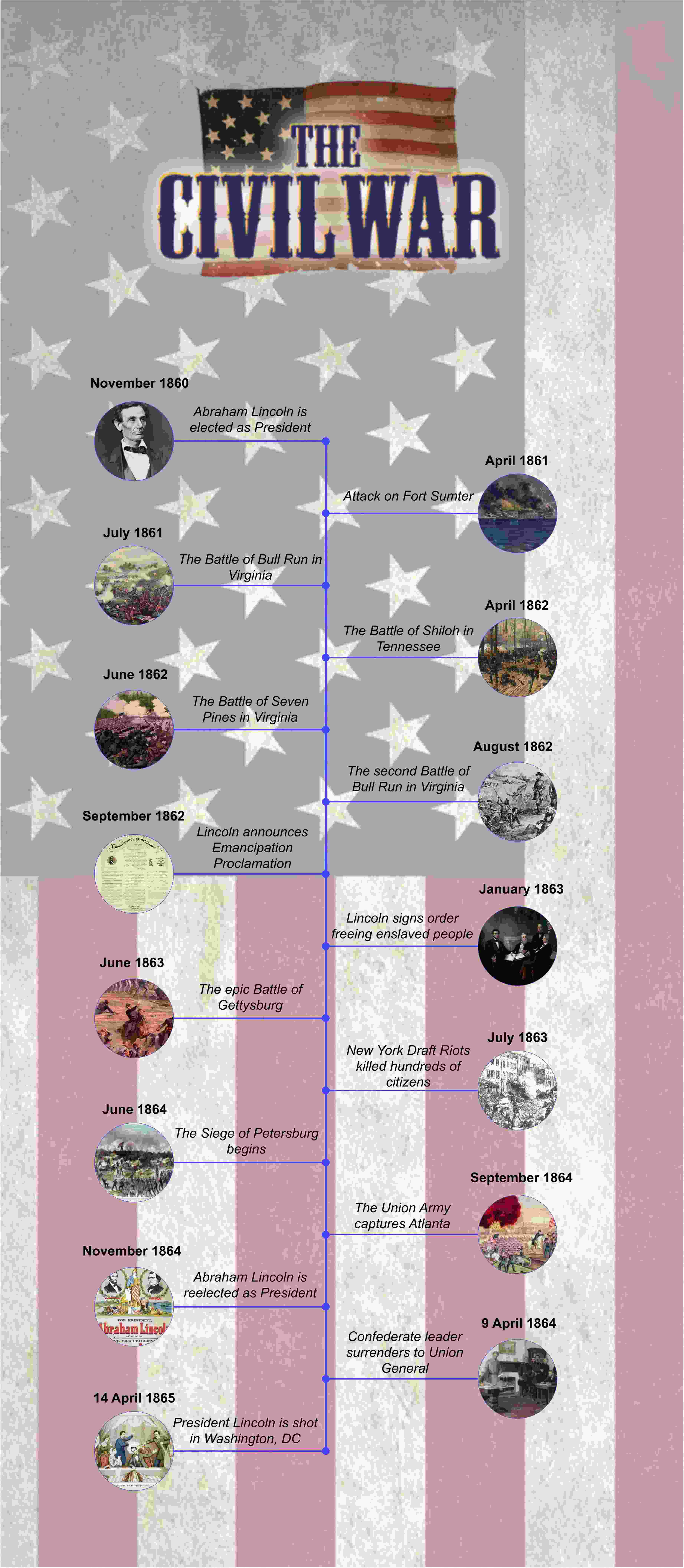The US once fought its deadliest war, but it wasn't against a foreign enemy. It was a battle against itself. From 1861 to 1865, towns turned into battlefields, and it seemed as if the country would never be whole again. At the heart of this conflict was a simple question: Would the US continue to encourage slavery laws or live up to its ideals of liberty?
The answer came at an unimaginable cost, with over 600,000 lives lost. What remained was a nation that had survived the greatest internal challenge it had ever faced.
In this article
US Civil War Battles Timeline: A Detailed Overview
The US Civil War was fought between the Southern and Northern states of America following the election of Abraham Lincoln as the US President. Although the conflict had been brewing for much longer, the election acted as the trigger. The reason that divided the nation was the slavery laws of that time.
The Southern states heavily depended on slave labor to operate their large plantations. For wealthy white landowners, it wasn't just about profits; it was about power. Slavery kept them at the top of a rigid social hierarchy. Abraham Lincoln, on the other hand, was a strong advocate of anti-slavery laws. So, when he was elected as President, the Southern states rebelled against him, forming the Confederate Army.
Over the next four years, the Union (federal army) and the Confederacy remained locked in a bloody struggle that claimed thousands of lives. Here's a complete breakdown of the U.S. Civil War timeline. It highlights the key events that shaped the conflict and how it ultimately came to an end.
November 1860Abraham Lincoln is elected as President
After Abraham Lincoln was elected as the 16th President of the United States, seven Southern States refused to obey federal law under his rule. They were against his anti-slavery laws as they threatened their way of life. The first state to secede from the Union was South Carolina. And one after another, more states separated from the Union, including Mississippi, Florida, Alabama, Georgia, Louisiana, and Texas.
These seven Southern states formed the Confederate States of America.
April 1861Attack on Fort Sumter
Fort Sumter was a military fort in South Carolina. So, when the seven Southern States broke free from the Union, they demanded that the troops vacate Fort Sumter. President Lincoln refused to cave in, and the Confederates launched an attack on the fort on 12 April.
The Union put up a good fight for 34 hours. However, their ammunition and supplies eventually ran out, leaving them no choice but to leave. The Confederacy won this conflict, and the Civil War officially began. Following the Fort Sumter attack, four more states, Virginia, Arkansas, North Carolina, and Tennessee, joined the Confederacy.
July 1861The Battle of Bull Run in Virginia
The two armies locked horns in their first battle on 21 July 1861. The Union army marched towards Richmond, which was the Confederate capital. The plan was to capture the capital and establish federal law. They expected an easy victory. But the opposing side fought back with all their might, and the Union Army had to return to Washington, D.C., defeated.
April 1862The Battle of Shiloh in Tennessee
Confederate forces attacked the Union Army near Pittsburg Landing, Tennessee. Although it was a surprise attack, the Union resisted the onslaught. And the Confederates faced a massive blow as the Union established its control over the Mississippi Valley.
June 1862The Battle of Seven Pines in Virginia
In June 1862, one segment of the Union Army separated from the rest near the Chickahominy River. The Confederates saw this as the perfect opportunity to strike at the soldiers. And while they had a solid start, the Confederates couldn't continue the attack due to bad weather. Hence, the battle remained inconclusive.
August 1862The Second Battle of Bull Run in Virginia
The Confederates attacked the Union Army near Bull Run under the command of General Robert Lee. The Union Army was outnumbered and had to retreat to Washington. This marked a major victory for the Confederates.
September 1862President Lincoln announced the Emancipation Proclamation
President Lincoln announced the Emancipation Proclamation on 22 September 1862. According to the proclamation, all enslaved people in the Confederate states were to be considered free. Despite this, not all enslaved people were able to free themselves from their masters. However, it changed the war's tide because now African Americans could join the Union Army and fight for their freedom.
January 1863President Lincoln signed the Executive Order to free enslaved people
Four months after the proclamation, President Lincoln signed the executive order to free all enslaved people. The number of soldiers in the Union Army witnessed a massive surge as over 180,000 African Americans joined ranks. This significantly strengthened the federal government's military prowess.
June 1863The epic Battle of Gettysburg
On 1 July, General Lee led the Confederate Army into the North, expecting a monumental win. Both armies clashed near Gettysburg, but they didn't know that the battle would turn into the deadliest battle in the Civil War's history.
The Union and Confederate armies suffered heavy casualties. The Southerners lost 28,000 men, while 23,000 Northerners died as a result of the battle. The loss at Gettysburg permanently weakened the Confederacy. However, it boosted the Union's morale.
July 1863New York Draft Riots killed hundreds of citizens
By 1863, the Civil War had continued for over two years, and voluntary enlistments were dropping fast. The Union Army needed fresh recruits who'd fight with them. So, the government passed the Enrollment Act of 1863, also known as the Union draft law.
Under this law, all male citizens between the ages of 25 and 40 had to enlist in the army. However, wealthier men could avoid service by paying a $300 commutation fee or hiring a substitute to fight in their place. This law enraged the working-class communities, resulting in the New York City Riots of July 1863.
Many government buildings and draft offices were damaged, and over a hundred civilians were killed.
June 1864The Siege of Petersburg begins
The Union Army, led by General Ulysses S. Grant, laid siege to Petersburg. The goal was to make the Confederates surrender. So, they cut off Richmond from the rest of the Southern states. The siege was long and unrelenting, lasting for over nine months.
Finally, on April 1, after the Union defeated the Confederates in the Battle of Five Forks, the troops breached the city's defenses. General Lee left Petersburg and Richmond the same night. He had hoped to regroup in the west, but the events that followed altered the war's course.
September 1864The Union Army captures Atlanta
Atlanta was a key supply center for the Confederacy. So the Union Army launched a well-planned campaign across Georgia to reclaim Atlanta. The Confederates fought long and hard, but the Union Army eventually took control of the city. Atlanta's fall helped President Lincoln in his reelection.
November 1864Abraham Lincoln is reelected as President
When Lincoln ran for his second term, American citizens were already tired of the war he'd started. It seemed the elections would favor the Democratic candidate, George B. McClellan. But when the Union Army defeated the Confederates in Atlanta, voters felt the war could finally end. And that's how Lincoln managed to get elected again.
9 April 1865Confederate leader surrenders to Union General
Lincoln's reelection was a bad sign for the Confederates. With no end in sight, and major losses in Gettysburg, Richmond, and Atlanta, the army was drained militarily and economically. Also, the Siege of Petersburg had cut off the South's supply, pushing them into a precarious state.
So, on April 9, 1865, General Lee surrendered to Union General Grant at Appomattox Court House. His surrender marked the end of the Civil War.
14 April 1865President Lincoln is shot in Washington, DC
Five days after Lee's surrender, President Abraham Lincoln was attending a play at Ford's Theatre in Washington. A renowned actor and Confederate sympathiser, John Wilkes Booth, attacked Lincoln in his private box, shooting him in the back of his head with a 0.44 caliber pistol.
He was immediately taken across the street to the Peterson House. But despite doctors' best efforts to save him, the gun wound took his life. He became the first US president to be assassinated.
How to Draw a Similar Timeline using EdrawMax?
A timeline is perfect for keeping track of historical events. And if you're interested in creating a timeline like the US Civil War above, try EdrawMax. The timeline tool offers a lot of exciting customization features along with pre-built templates. So, you can either build a diagram from scratch or select a template and edit it. The software is completely beginner-friendly, which means you can make professional-looking designs without any expertise.
Simply download EdrawMax or launch the app in your browser to get started.
Step 1Start With a Blank Canvas
- Open EdrawMax on your desktop.
- Click New on the left panel and select Blank Drawing to open a new canvas.
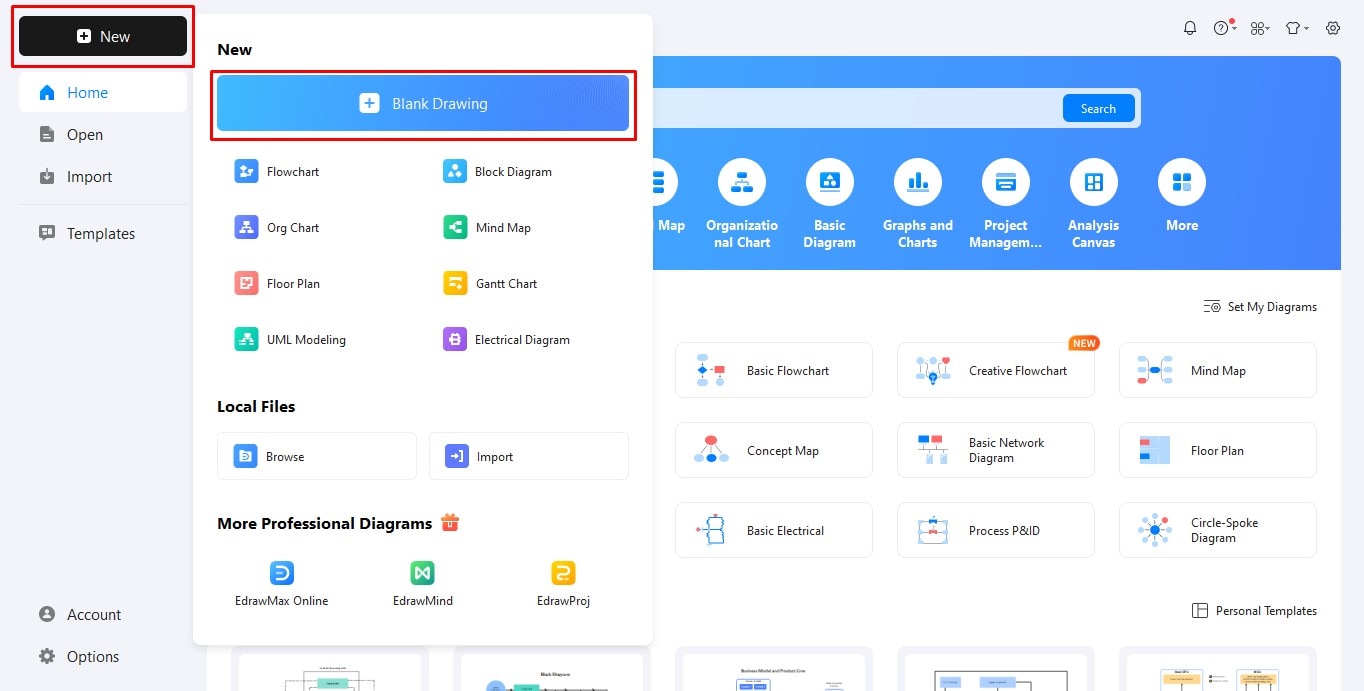
Step 2Insert Background Image
- Locate Insert on the top toolbar and select Picture from the options.
- Choose Local pictures and upload an image to use as the timeline's background.
- If you want to adjust the image's brightness, contrast, or transparency, click on the inserted image to reveal the customization panel. Select Adjust to tweak the background image.
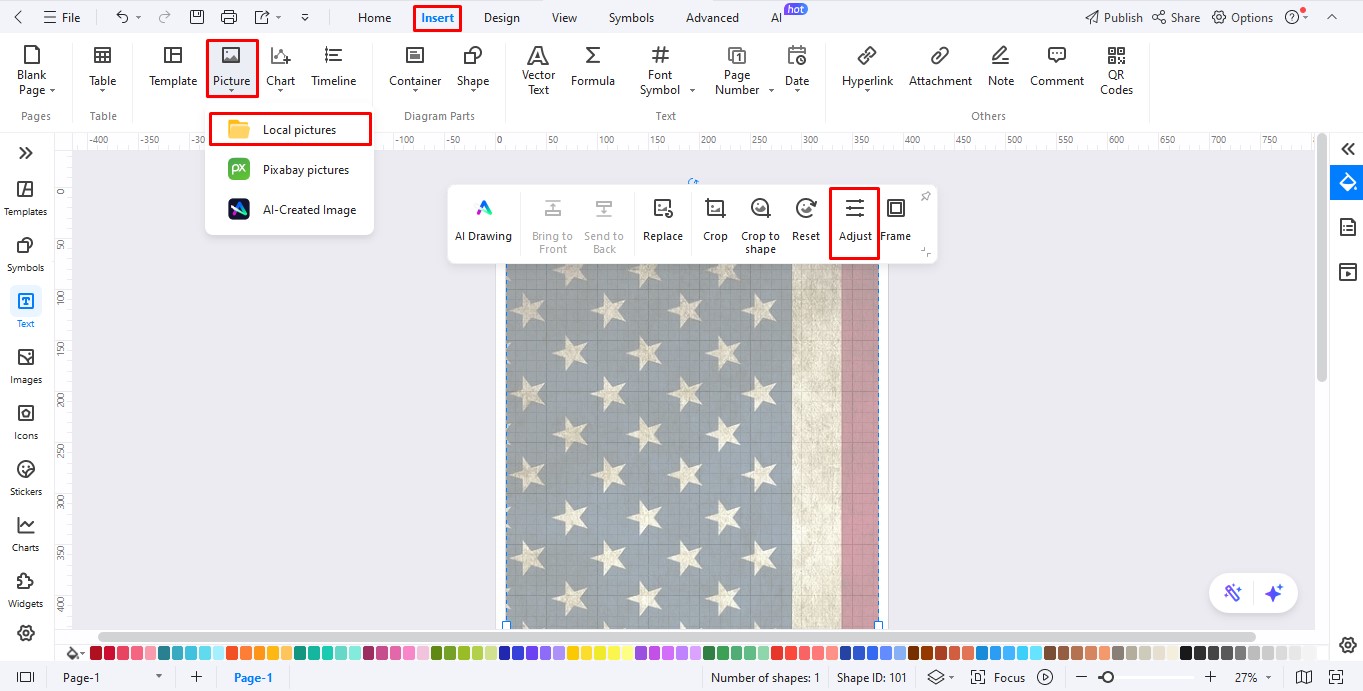
Step 3Add a Heading to the Timeline
- You can either add a heading to the timeline through a text box or an inserted image. For this timeline, we will insert an image.
- Follow the same steps outlined above: Insert > Picture > Local Pictures to insert the heading.
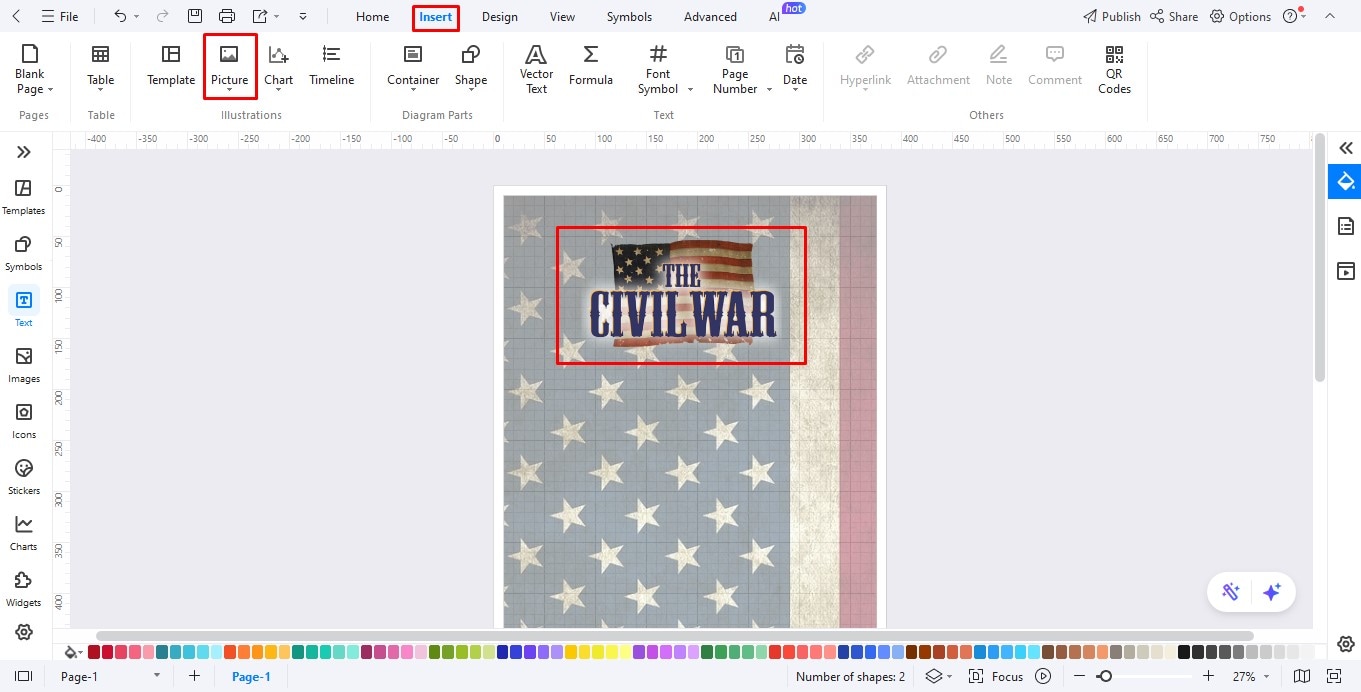
Step 4Insert Timeline
- Click Insert to reveal more options.
- Select Timeline and scroll down to Vertical Timeline.
- Choose the 4th timeline option that includes images and click OK.
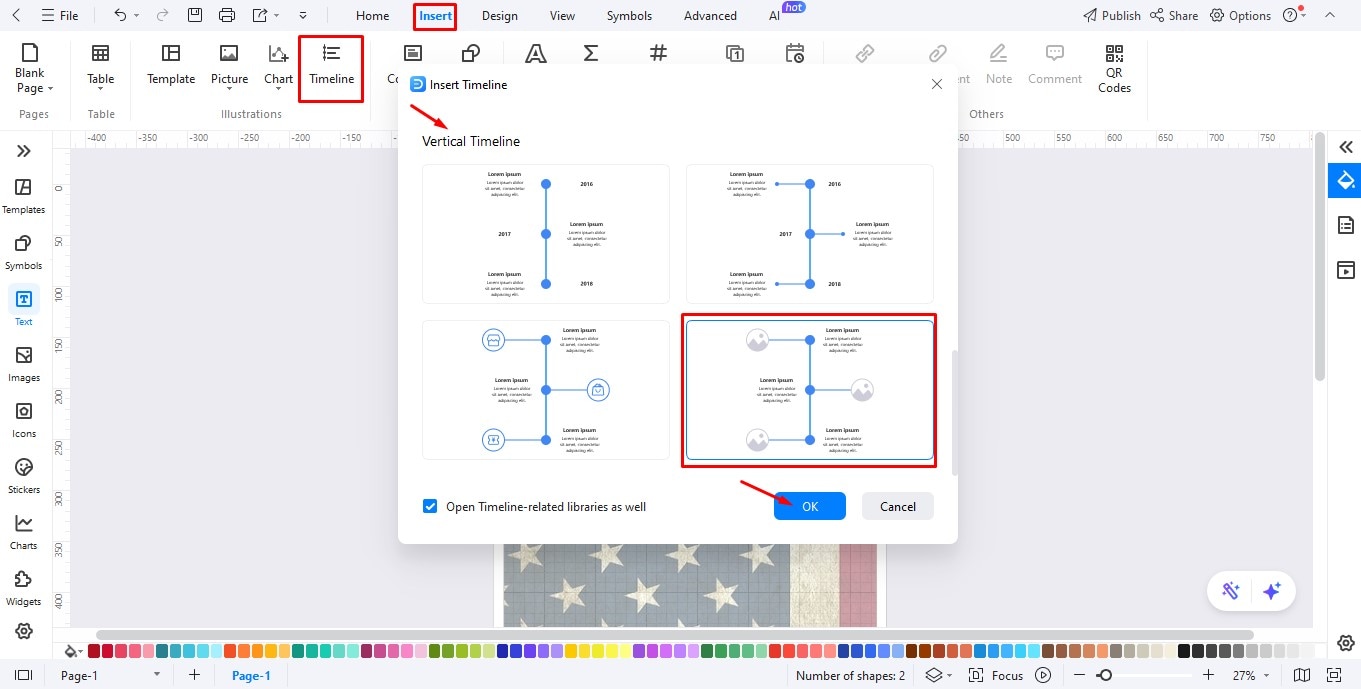
Step 5Add Text to the Timeline
- Locate and click Text on the left editing panel.
- Choose Click to Add Subtitle and insert the first key date in the Civil War timeline.
- Next, select Click to Add Body to enter a major event that occurred on that date.
- Continue adding the remaining dates and events to the timeline.
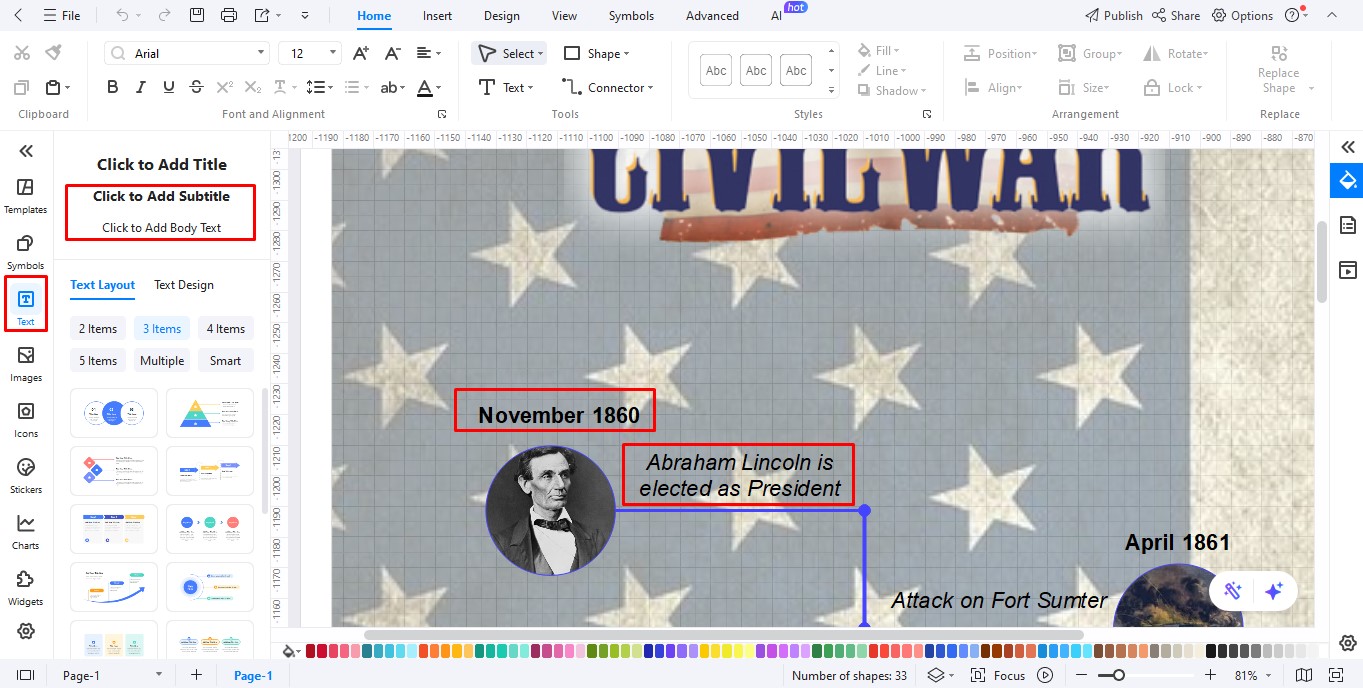
Step 6Insert Thumbnail Images
- Thumbnails make your timeline look more professional. So, follow Insert > Picture > Local pictures and add thumbnails to the timeline.
- If you want to change the image's outline, click on the thumbnail to reveal the customization panel. Select Crop to Shape and pick an outline you like.
- Follow the same steps to add the rest of the thumbnails.
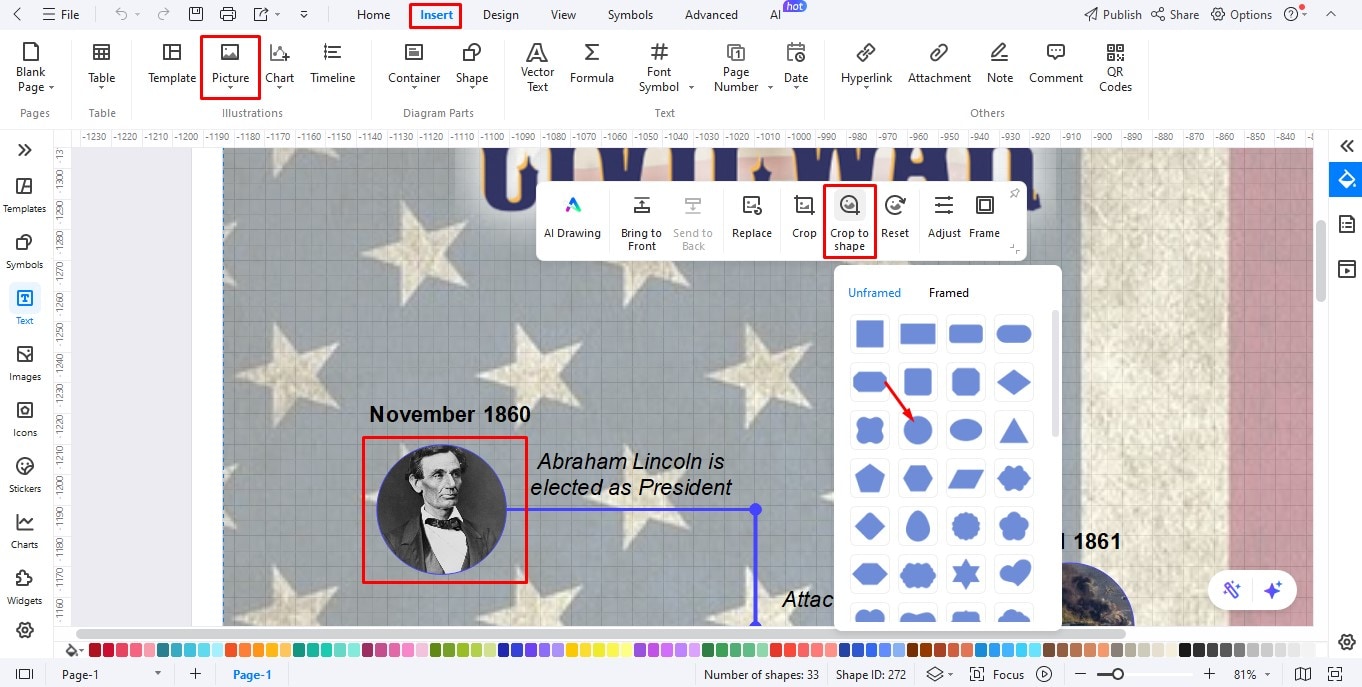
Step 7Export Image
- Once the timeline is ready, click Export on the top panel to view your saving options.
- With EdrawMax, you can export the timeline in various formats, including JPG, PDF, Word, Visio, GIF, etc.
- Select Graphics and save the file in JPG format.
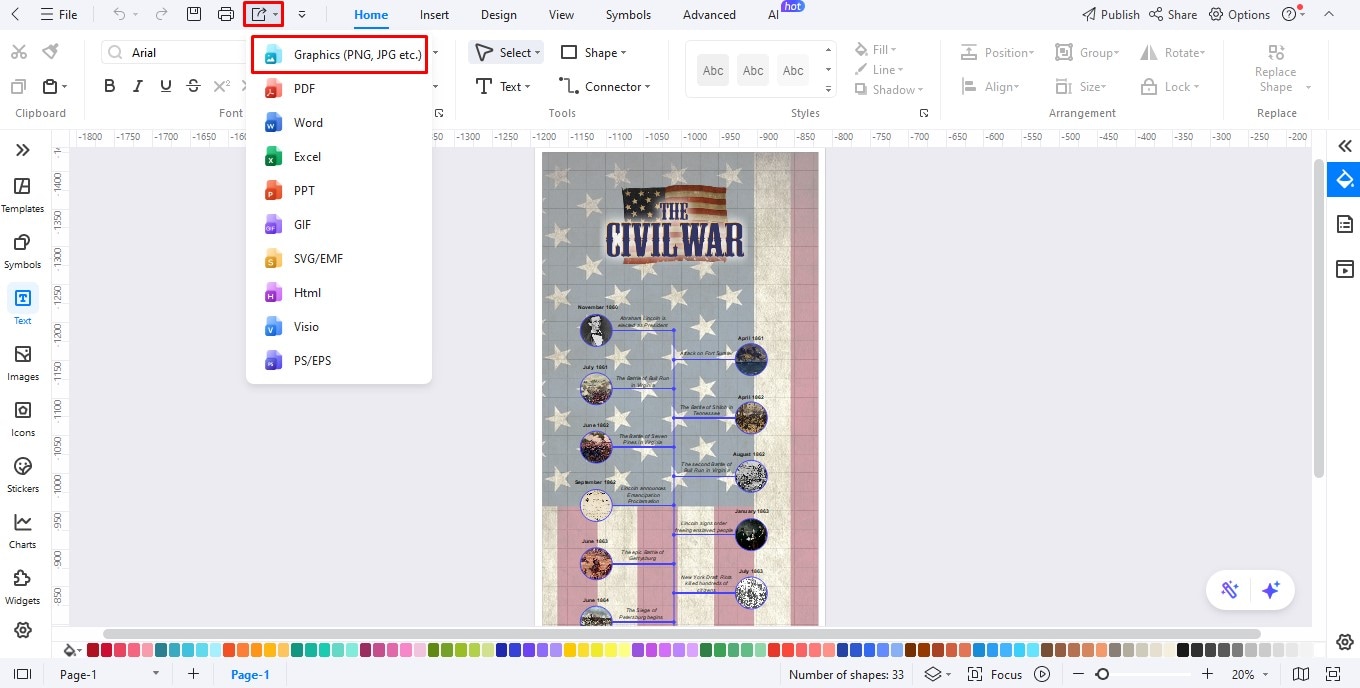
Final Word
When the Civil War finally ended, African Americans were officially free. However, they were still a very long way from equality and justice. And while they struggled for equal opportunities, Southern landowners lost their livelihood altogether. The war changed what it meant to be American, and many people had to rebuild their lives from scratch to survive.
Do you want to make a timeline like the one above? EdrawMax is an amazing tool that lets you create professional-looking diagrams without design expertise. It's easy and fun to use. So, give it a try today.




